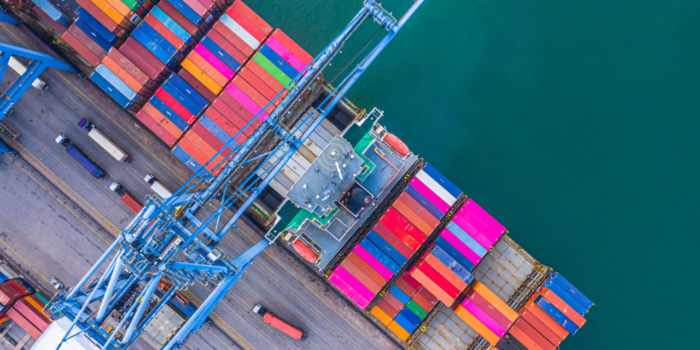In order to help tackle container-related incidents onboard ships, five international freight transport and cargo handling organisations will cooperate to produce new guidance on packing standards for freight containers and other cargo transport units.
Namely, the Container Owners Association (COA), the Global Shippers Forum, the International Cargo Handling Co-ordination Association (ICHCA), the TT Club and the World Shipping Council (WSC), will join forces on a vast array of activities. This aims to adopt and implement safety practices throughout the global supply chain.
The five organisations have also published a ‘Quick Guide’ to the United Nations sponsored Code of Practice for Packing of Cargo Transport Units (the CTU Code). This is accompanied by a Checklist of actions and responsibilities for the guidance of those carrying out the packing of cargoes in freight containers.
What is more, one of the aims of this collaboration is to promote awareness and further use of the IMO/ILO/UNECE Code of Practice for Packing of Cargo Transport Units – the CTU Code.
According to the partners, a consistent and widespread compliance to the CTU Code by all parties within global CTU supply chains is able to reduce these types of incidents.
To do this, the organisations are collaborating as the Cargo Integrity Group and have identified four areas of activity to raise the awareness. These are:
- Promoting awareness and adoption of the CTU Code;
- Seeking changes in regulatory requirements to improve their clarity, application, implementation and enforcement;
- Monitoring of CTU packing performance through support for strengthened cargo screening processes;
- Working with other industry and governmental stakeholders in promoting awareness and better understanding of safe cargo packing and handling.
Commenting on the partnership, Capt. Richard Brough OBE of ICHCA International explained the aim is for the Code to be as accessible to as many operatives as possible and encourage them to learn how it can be applied to their own particular needs.
Such actions can also support and empower industry and government sponsored container inspection programmes that are fundamental to improving good practice and understanding how regulations actually operate. It is thus part of CIG’s third objective to participate in the ongoing revision of the IMO Circular regarding container inspection programmes and support related industry cargo screening initiatives
TT Club’s Peregrine Storrs-Fox stated.
As for Uffe Ernst-Frederiksen of the Container Owners Association, he notes that the IMO/ILO/UNECE CTU Code describes in chapter 4 the roles and responsibilities of parties in the container supply chain for the safe packing, handling, stowage and transport of containers and the correct reporting of their actual weights.
Neverthless, he explains that a fact often overlooked, is that the CTU Code also deals with supply chain parties’ responsibilities to minimize visible pest contamination from containers and their cargoes. For this reason, the partnership wants to draw attention to this important issue.
In addition, the material published also makes reference to guidance recently developed and published by the IPPC’s Sea Container Task Force. One of the key objectives of the SCTF is to promote voluntary government-industry cooperation on minimizing pest contamination of CTUs. The five organizations fully support this objective and call on all parties in the international containerized supply chains to actively support and participate in such voluntary programs.
Finally, James Hookham of GSF added that the collaborating organizations are reaching out to other bodies in the supply chain and in governmental agencies to join with them in promoting high standards of the packing of all cargo transport units and understanding the inter-connectedness of differing objectives.































































